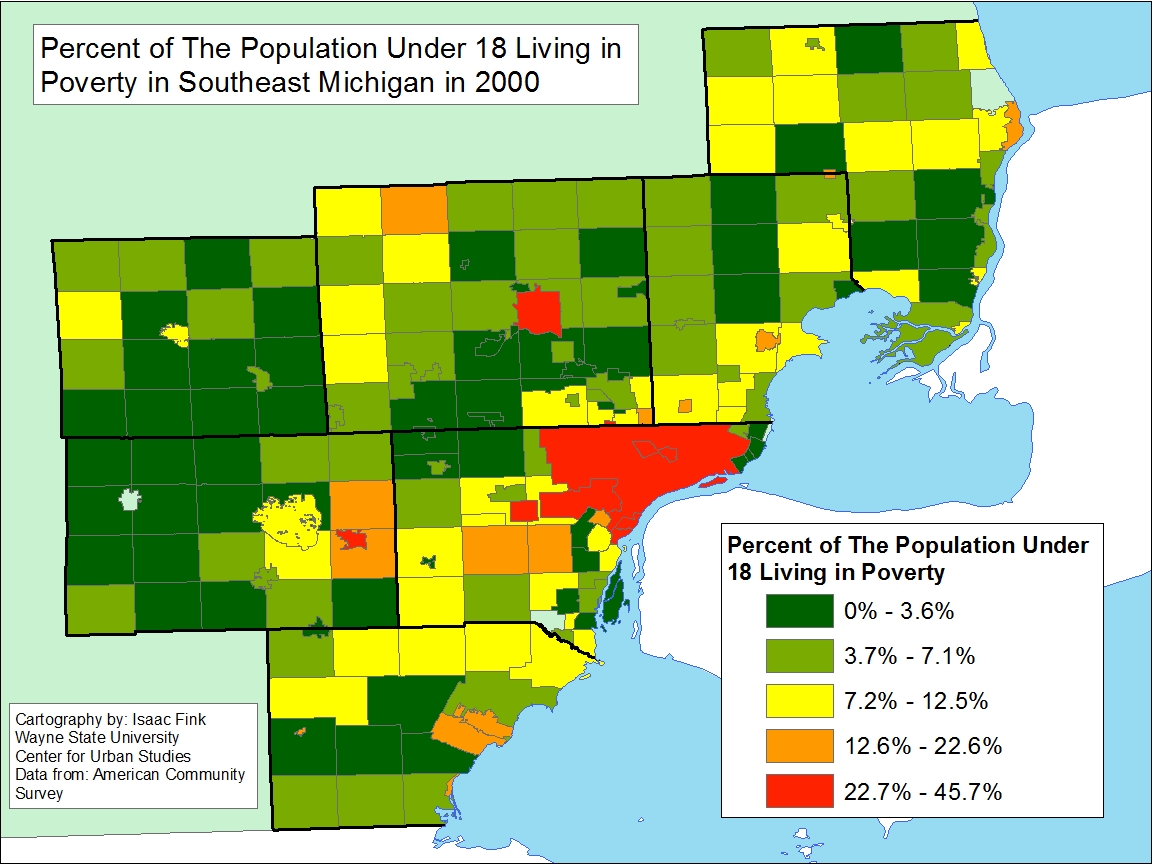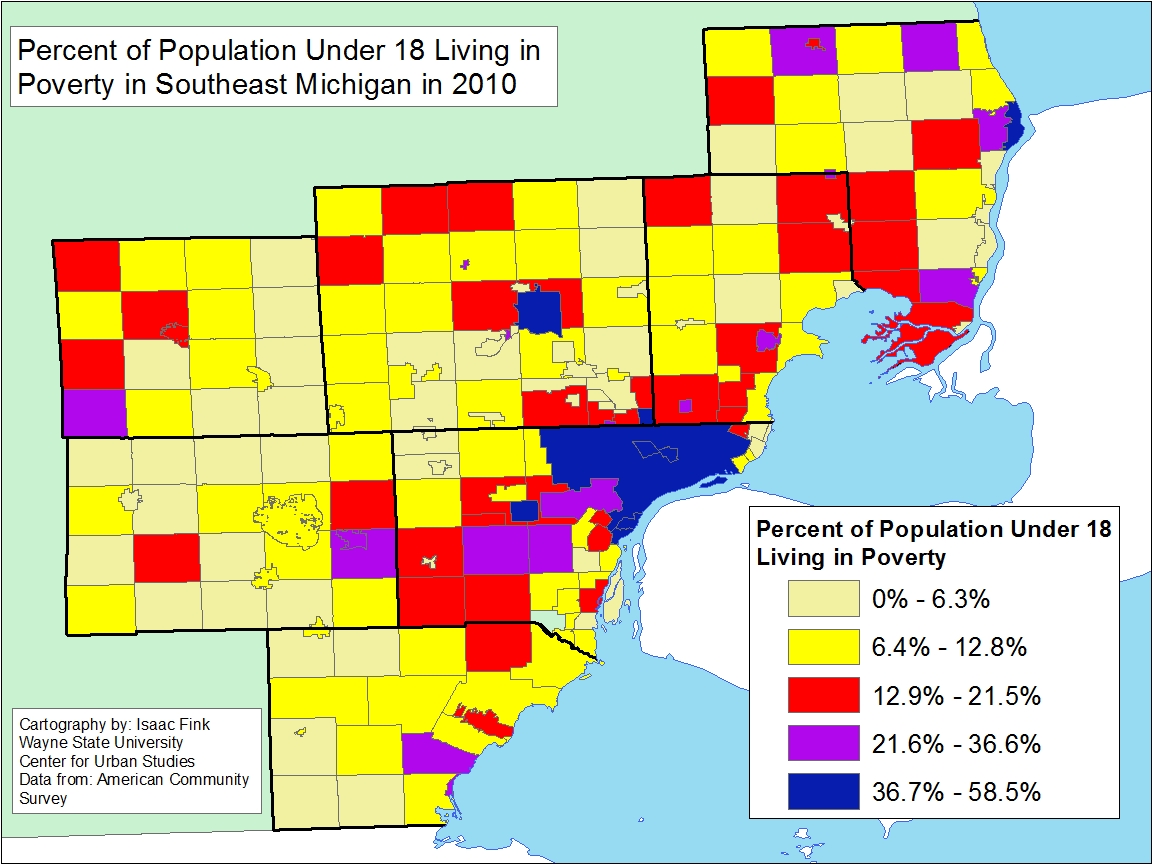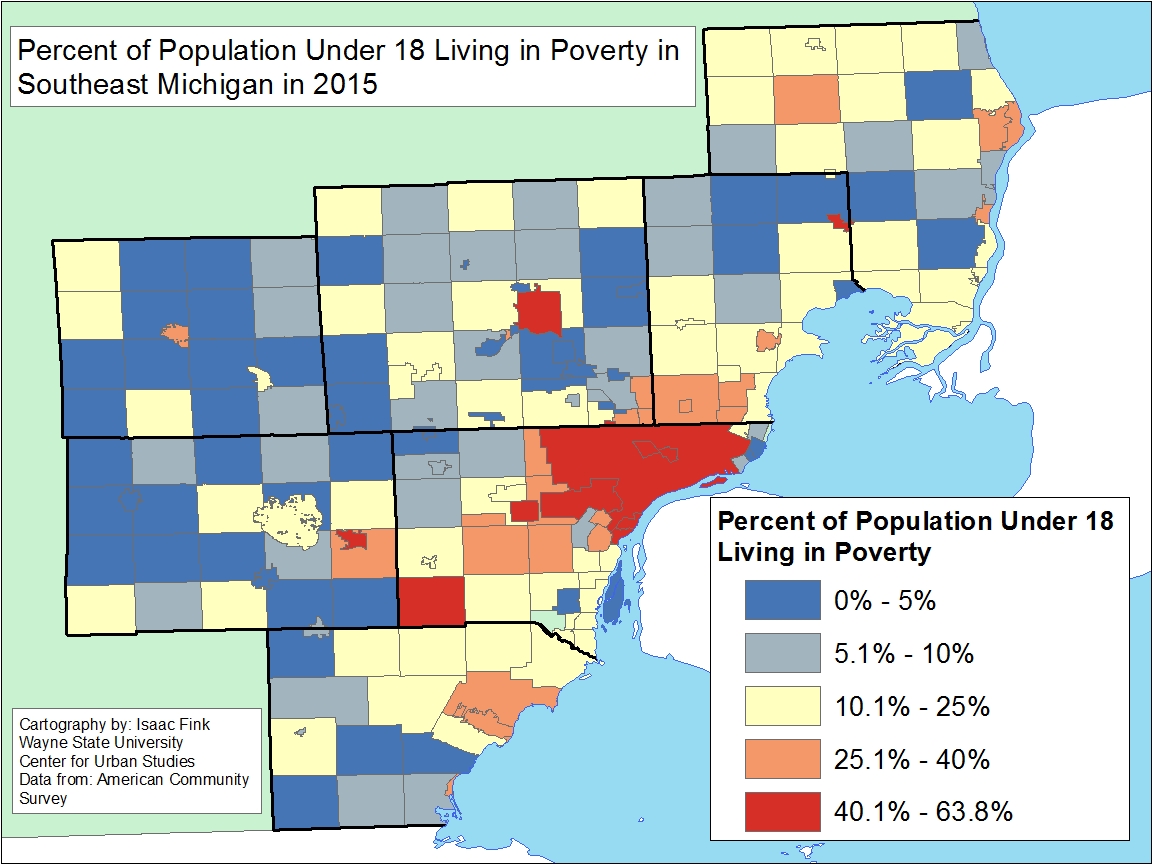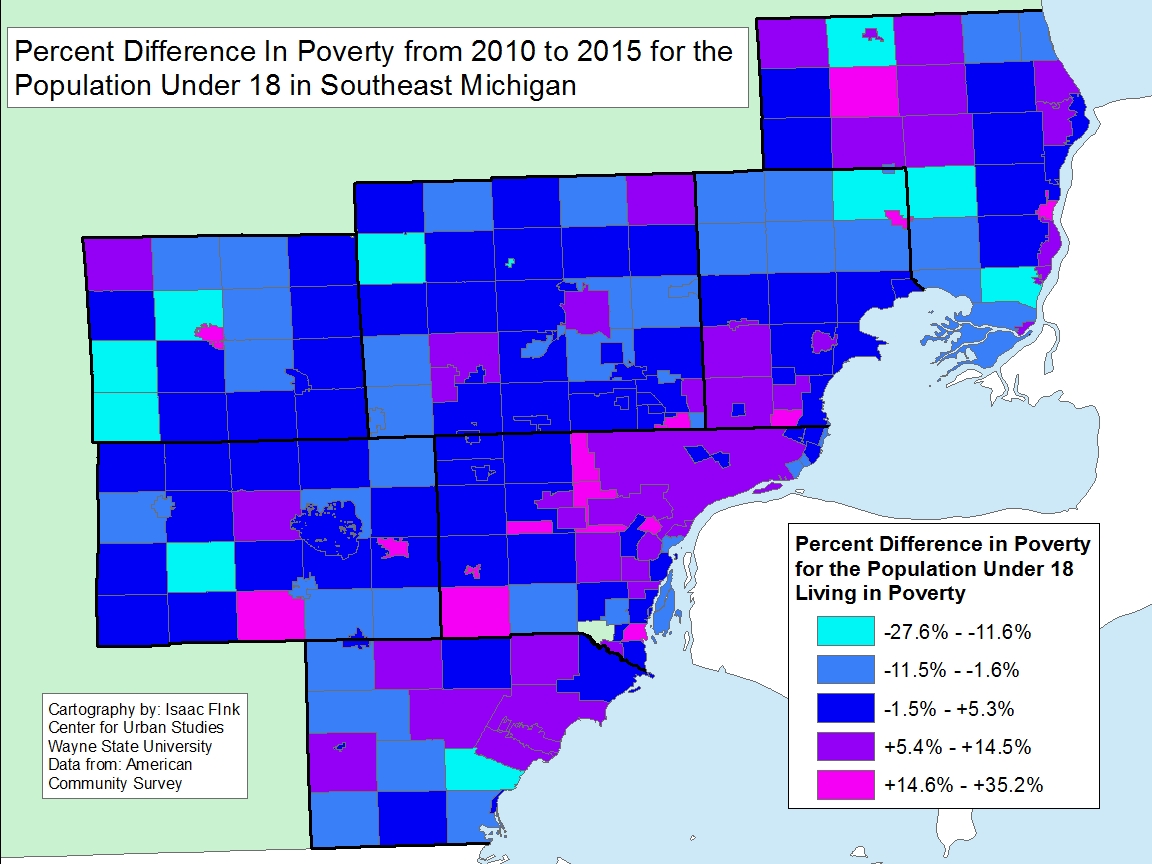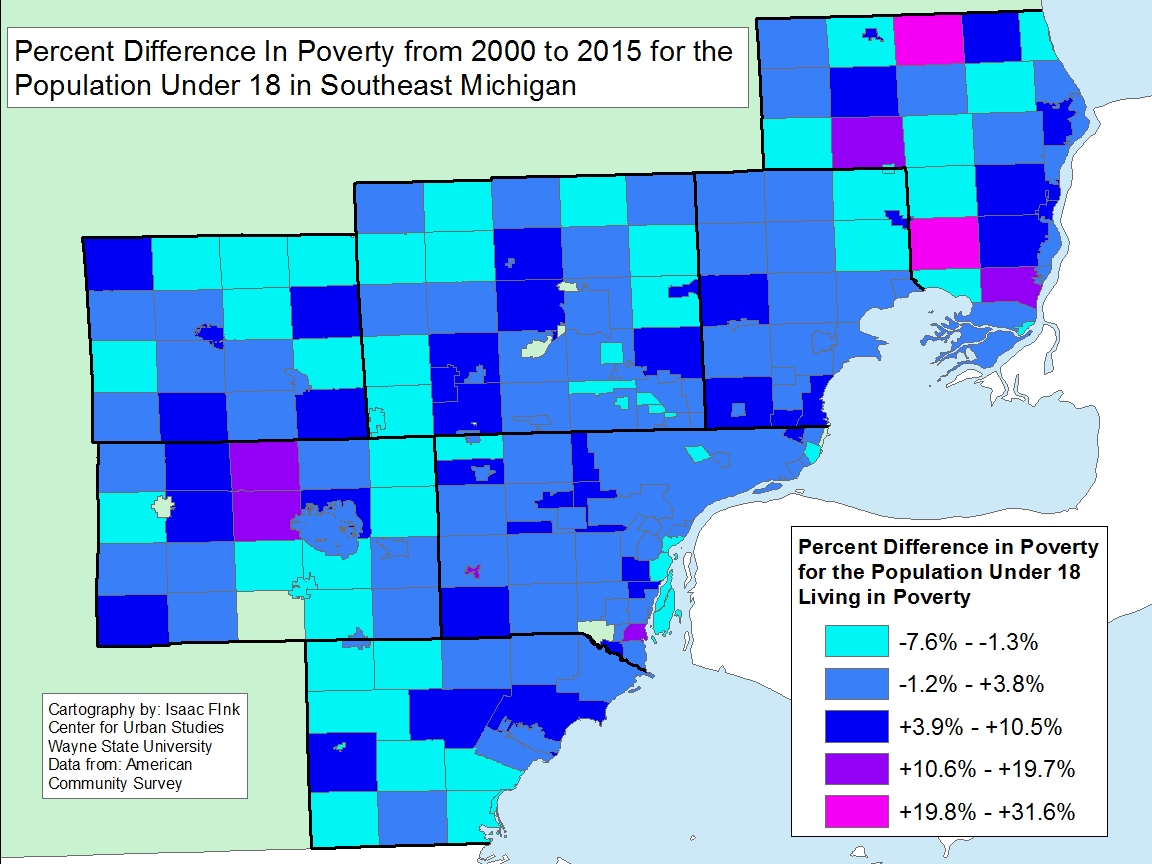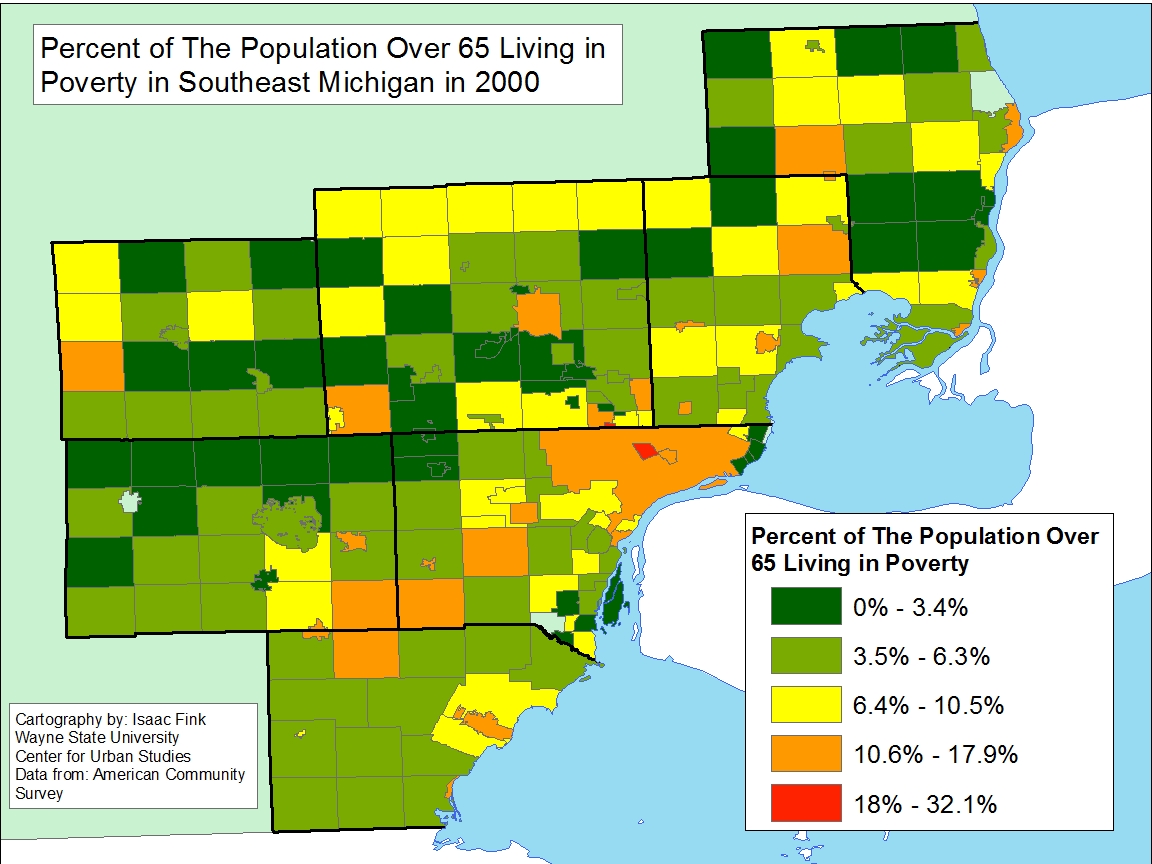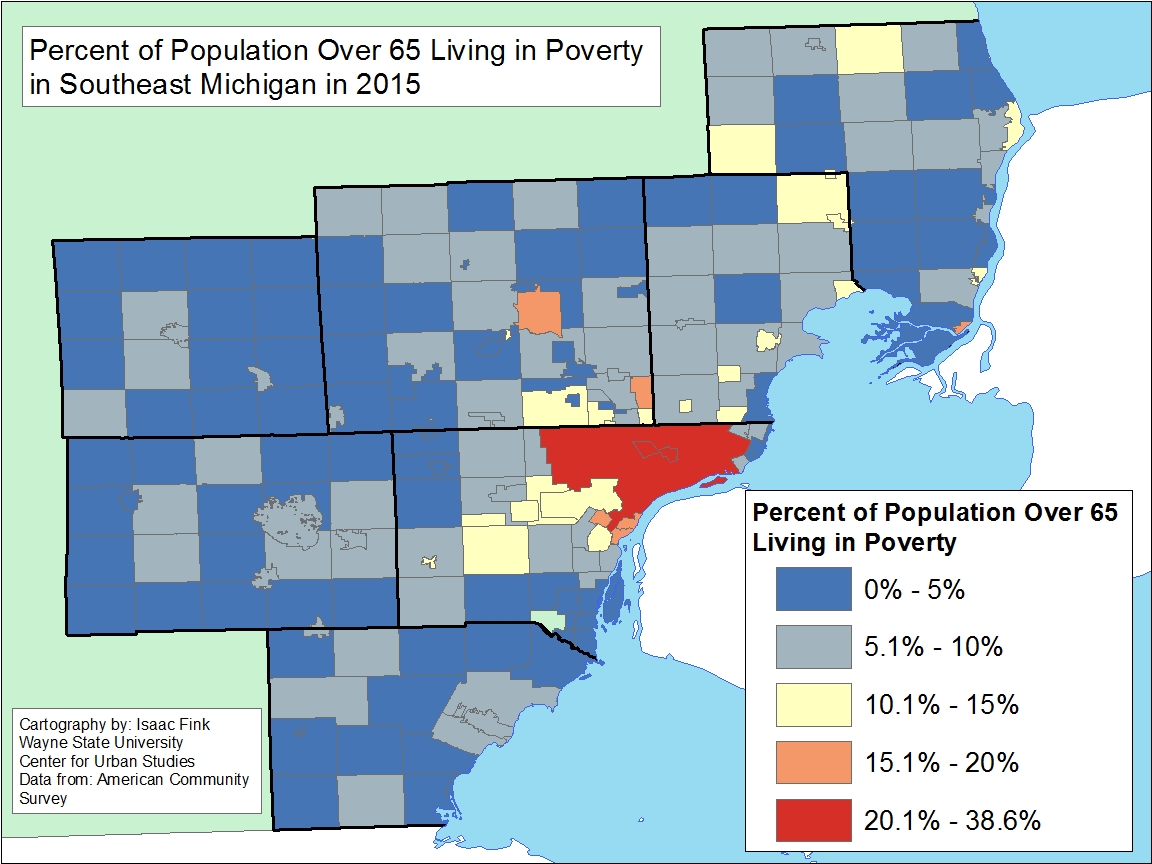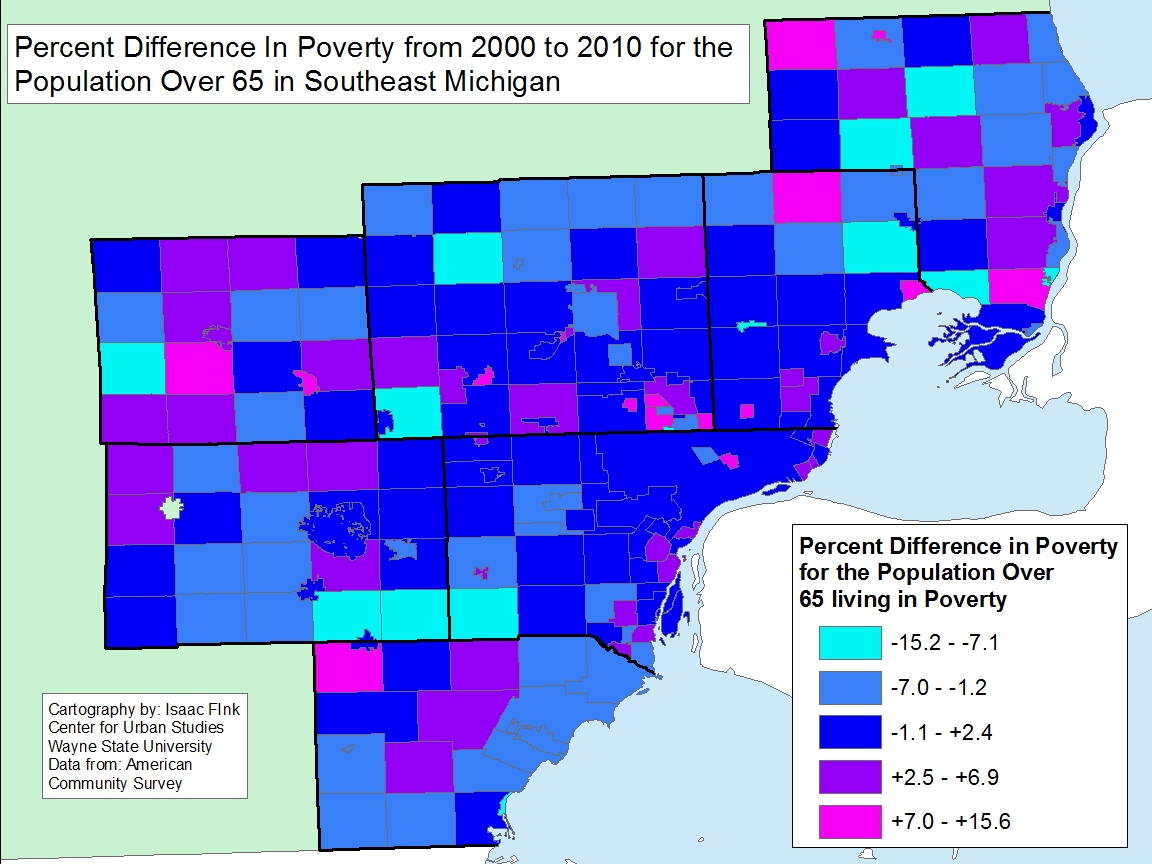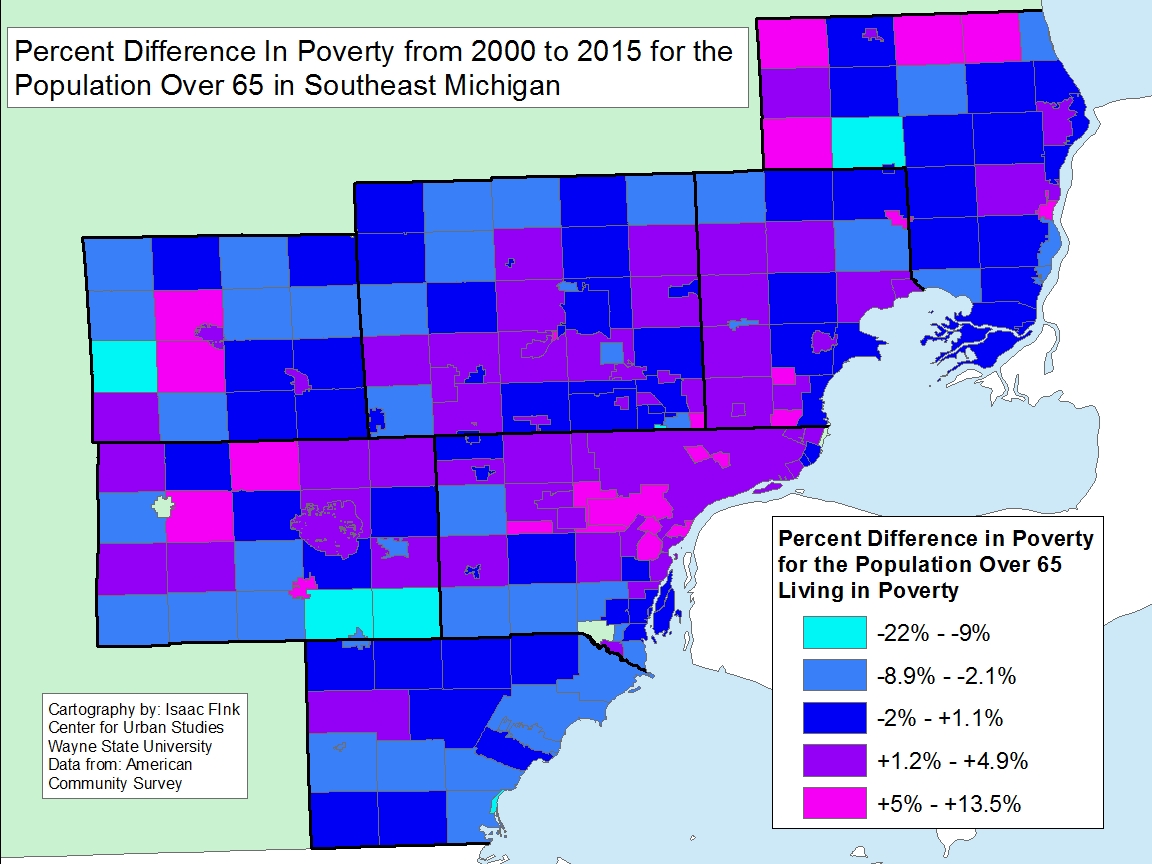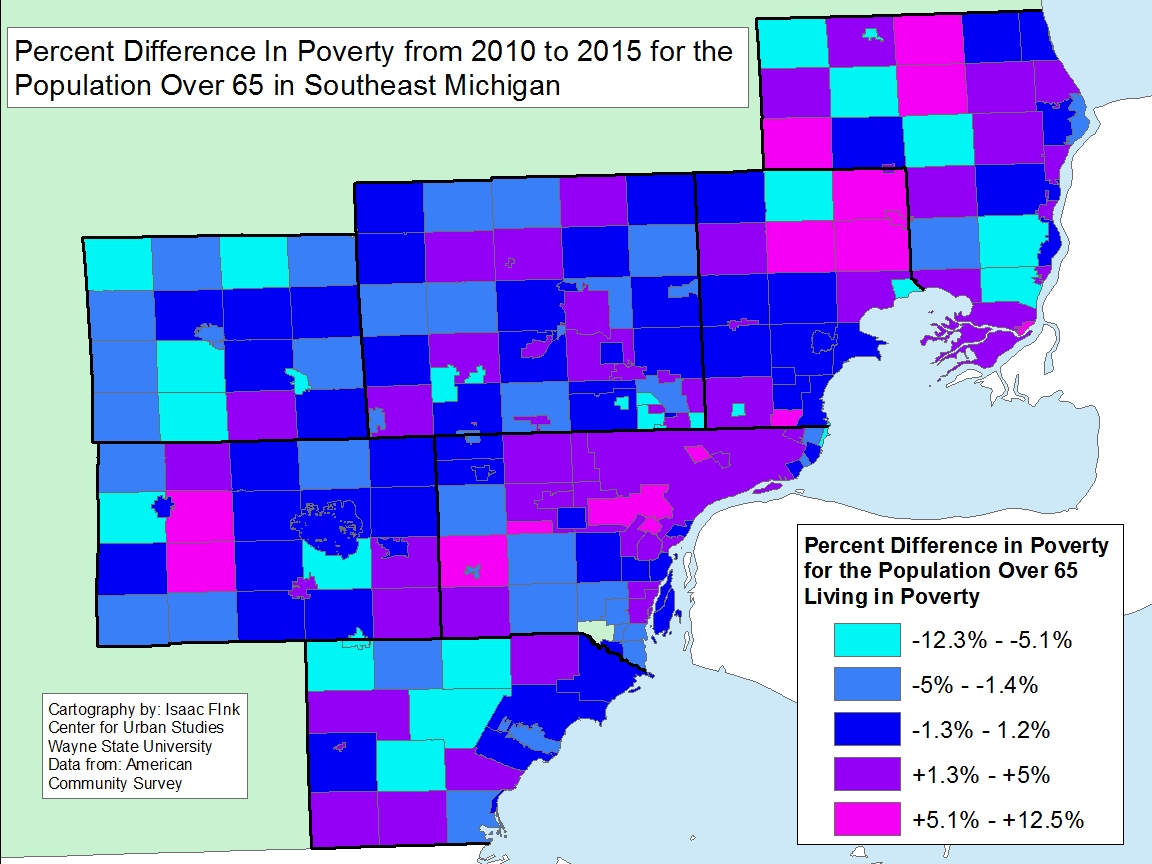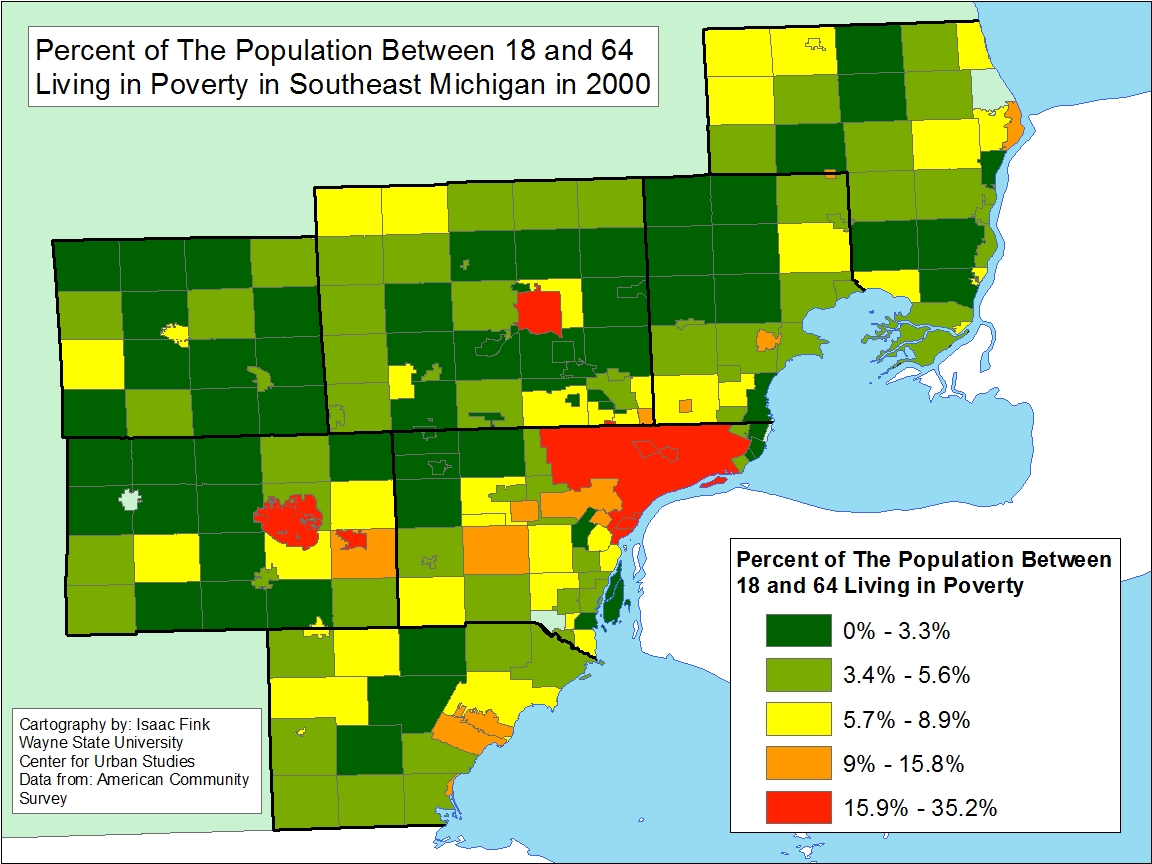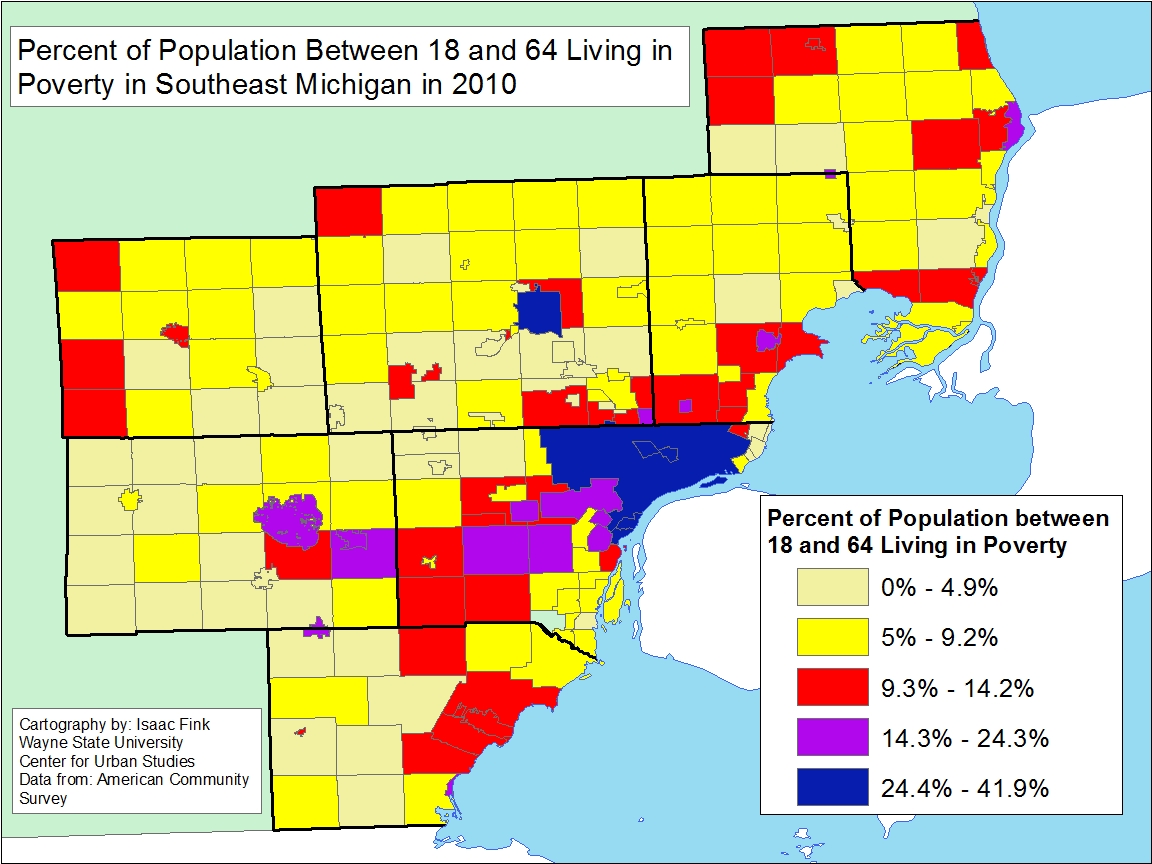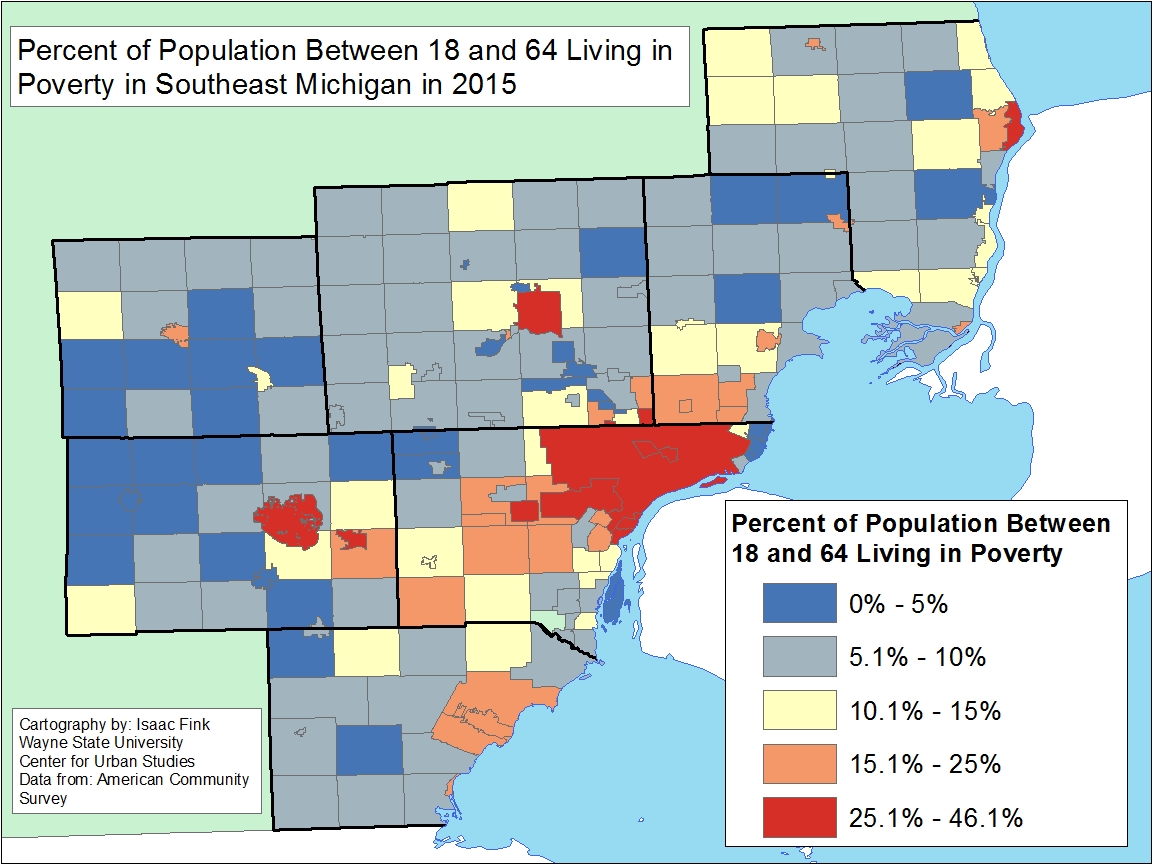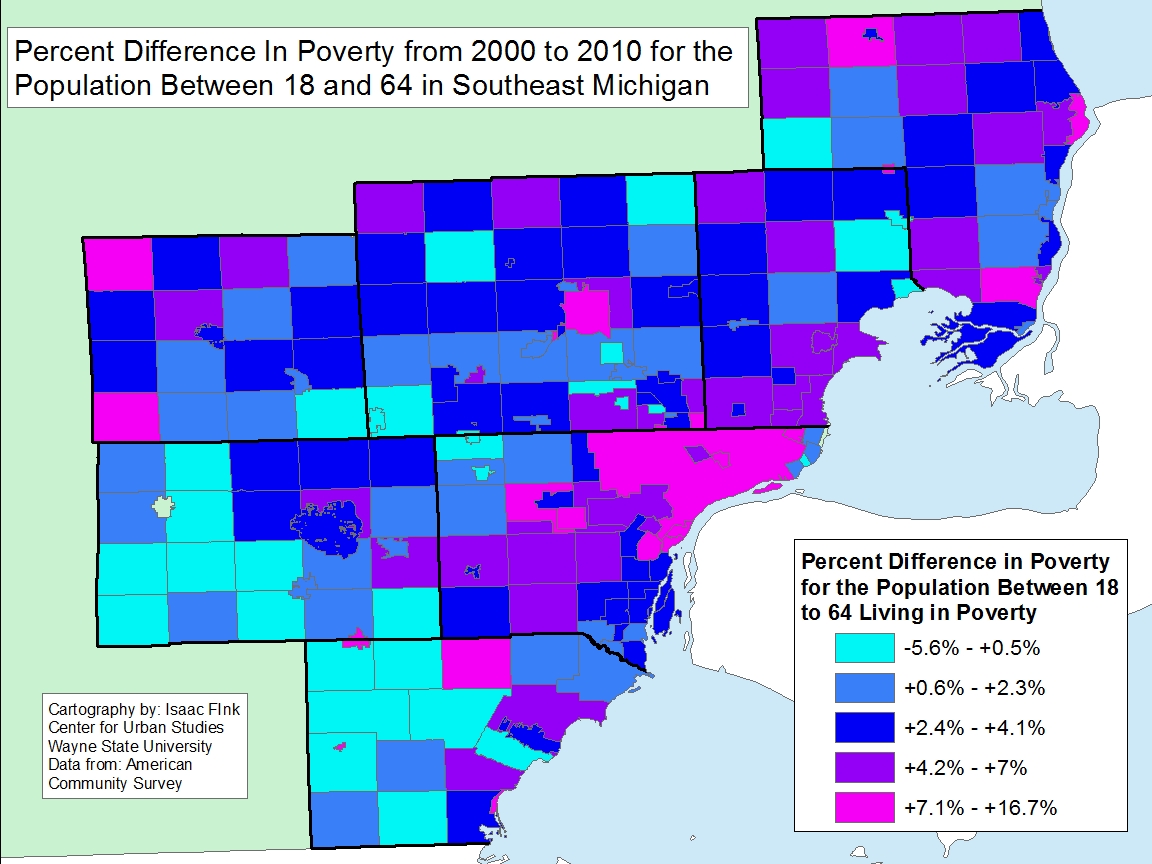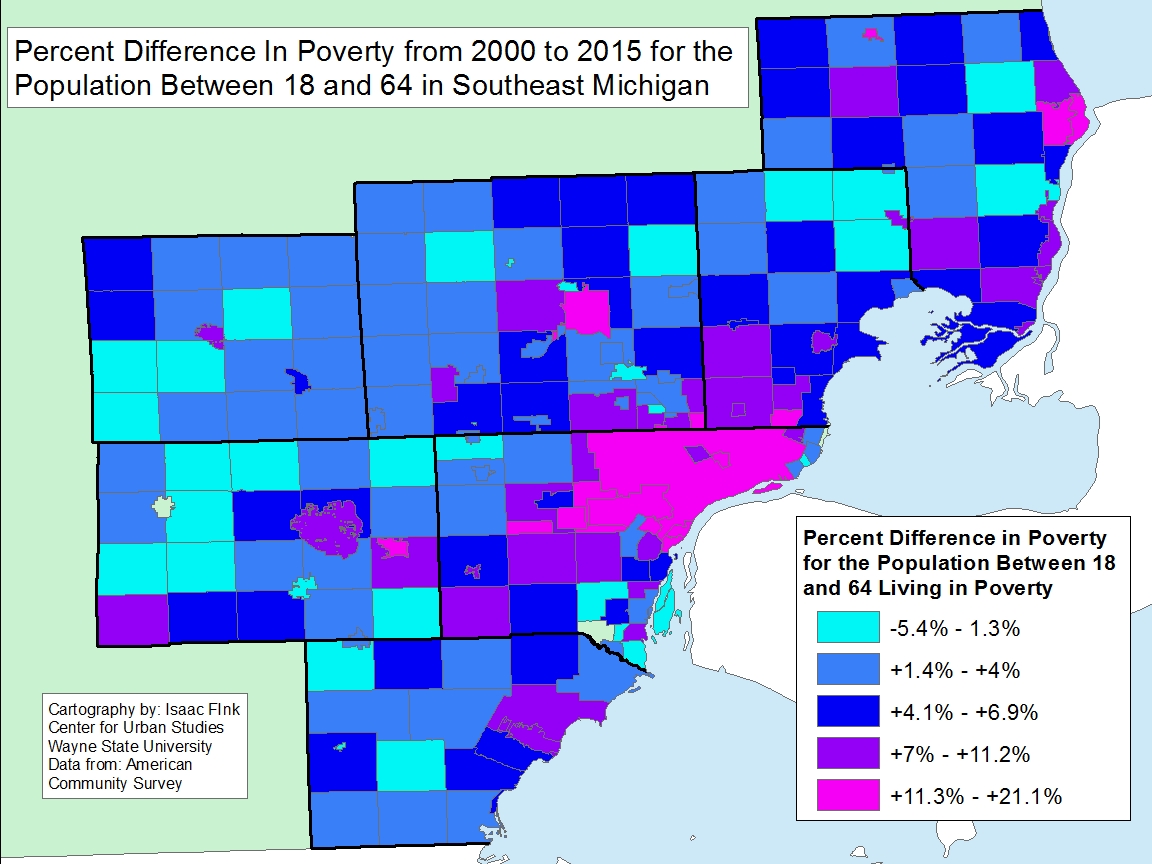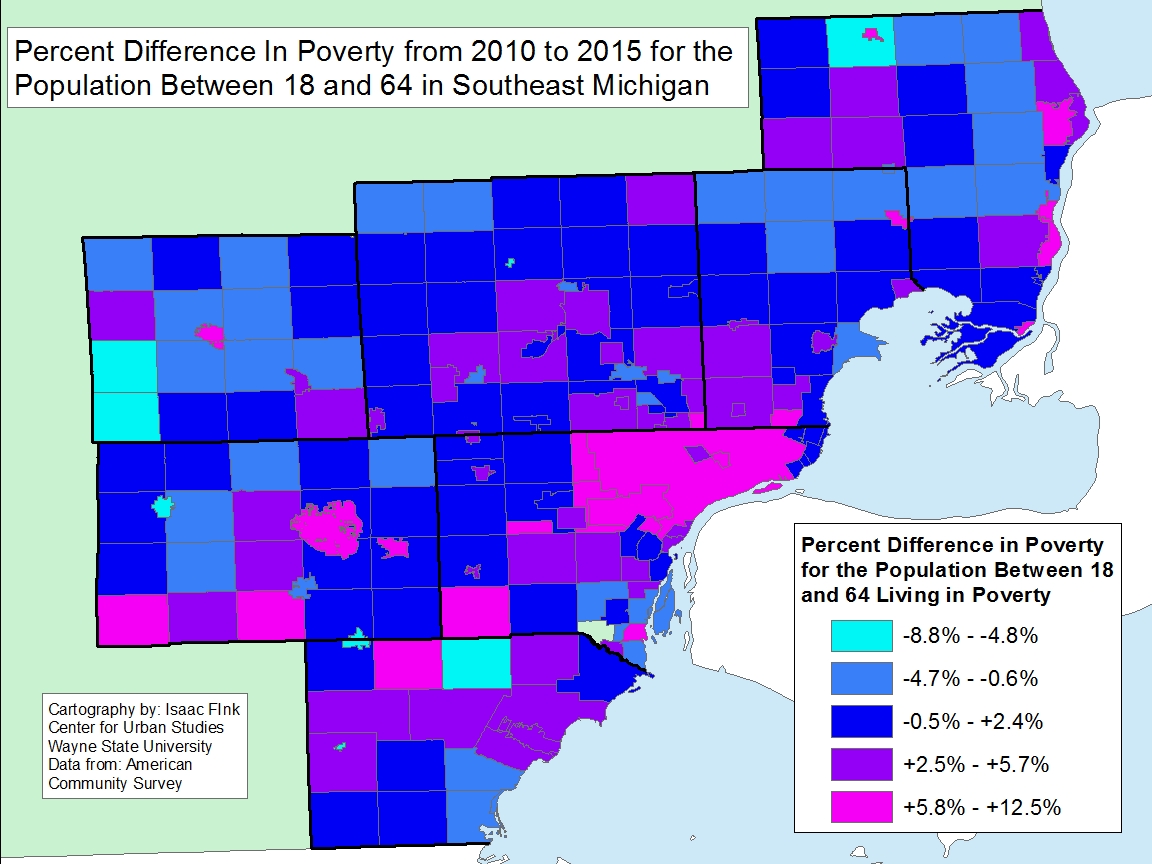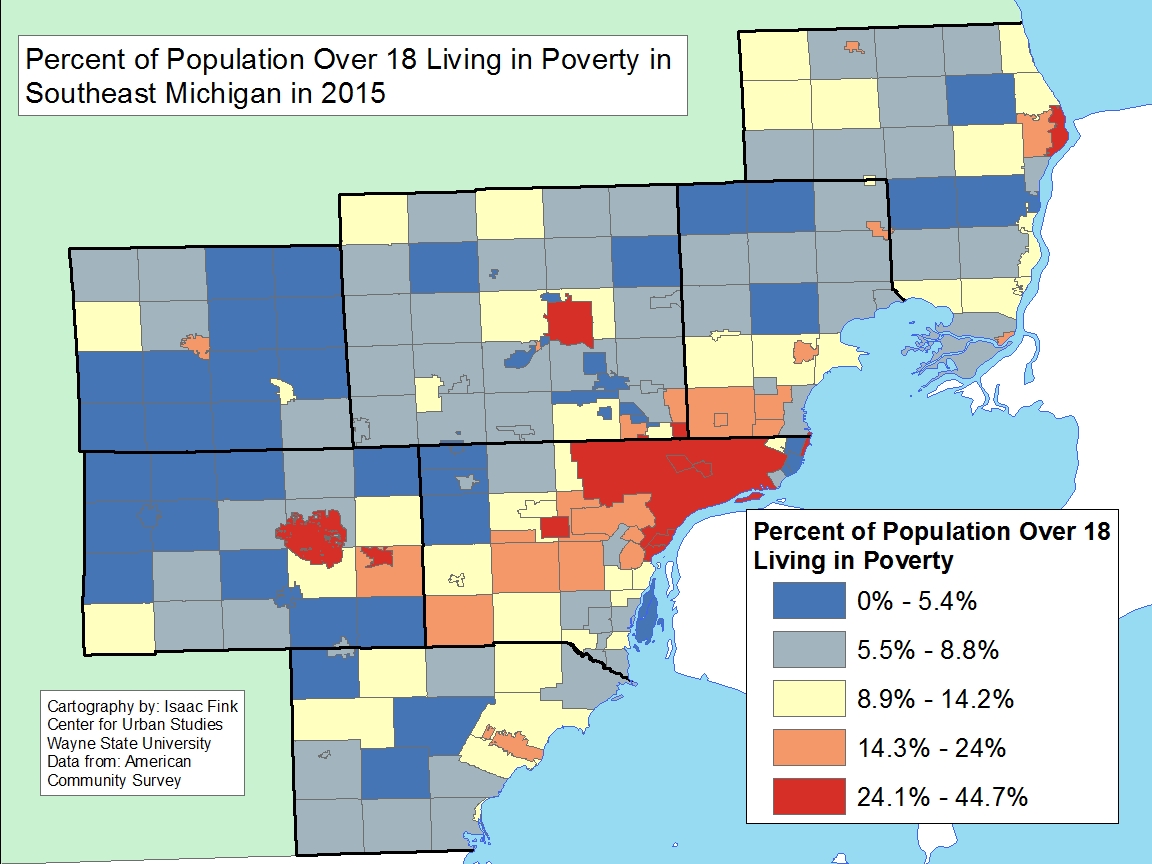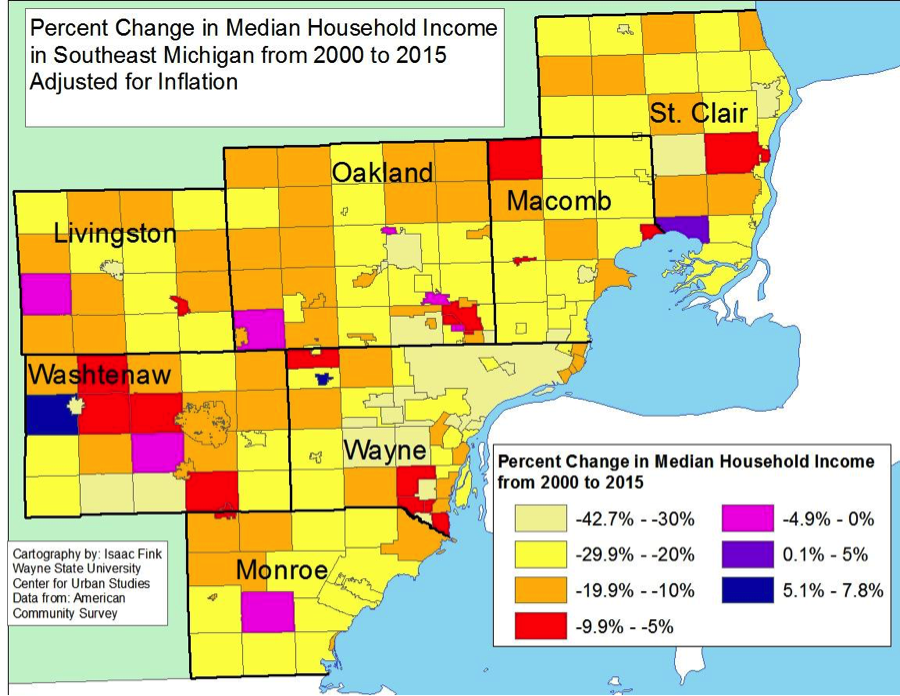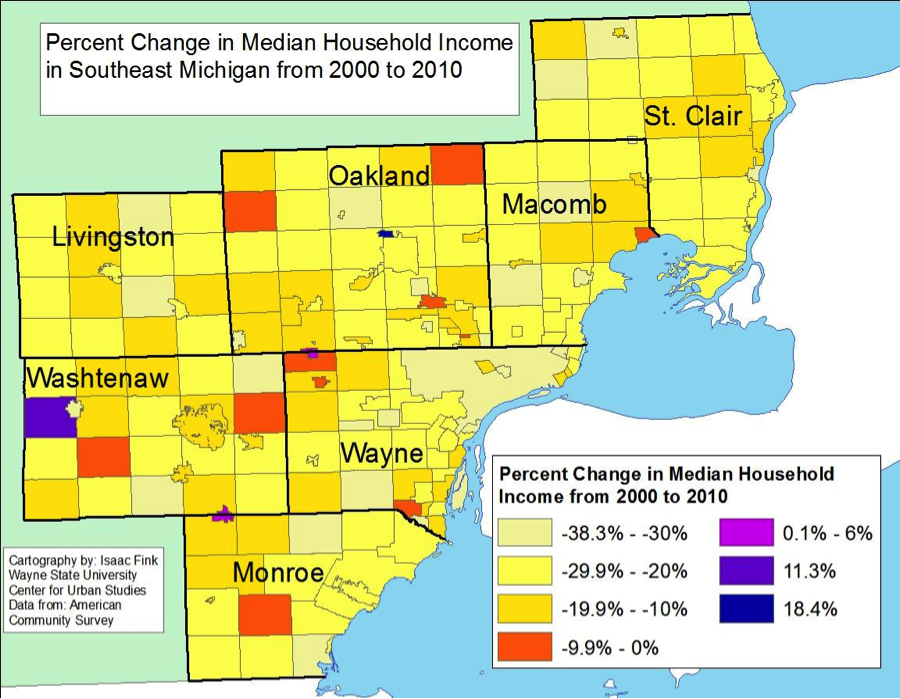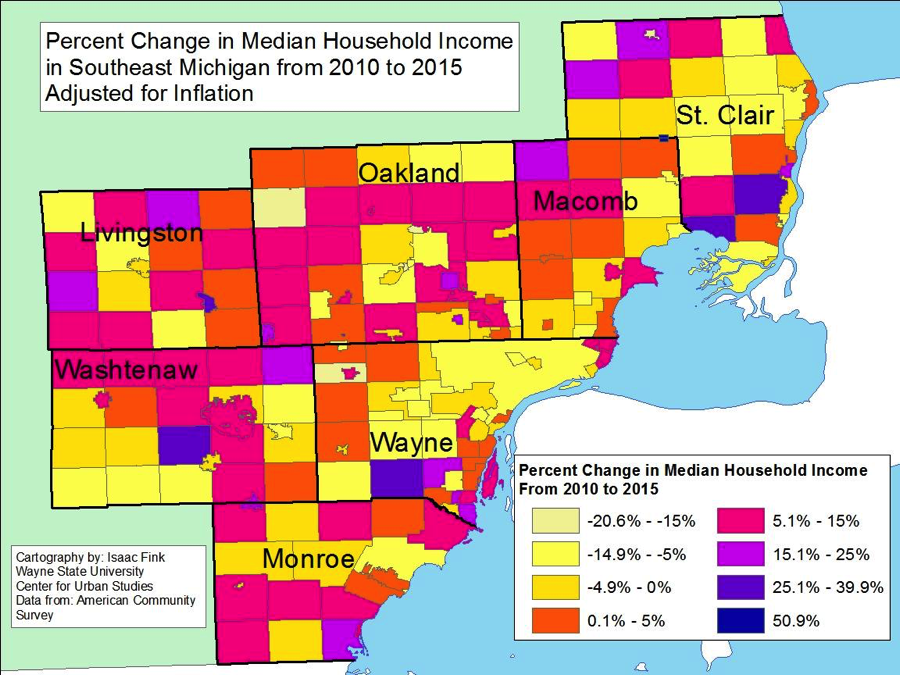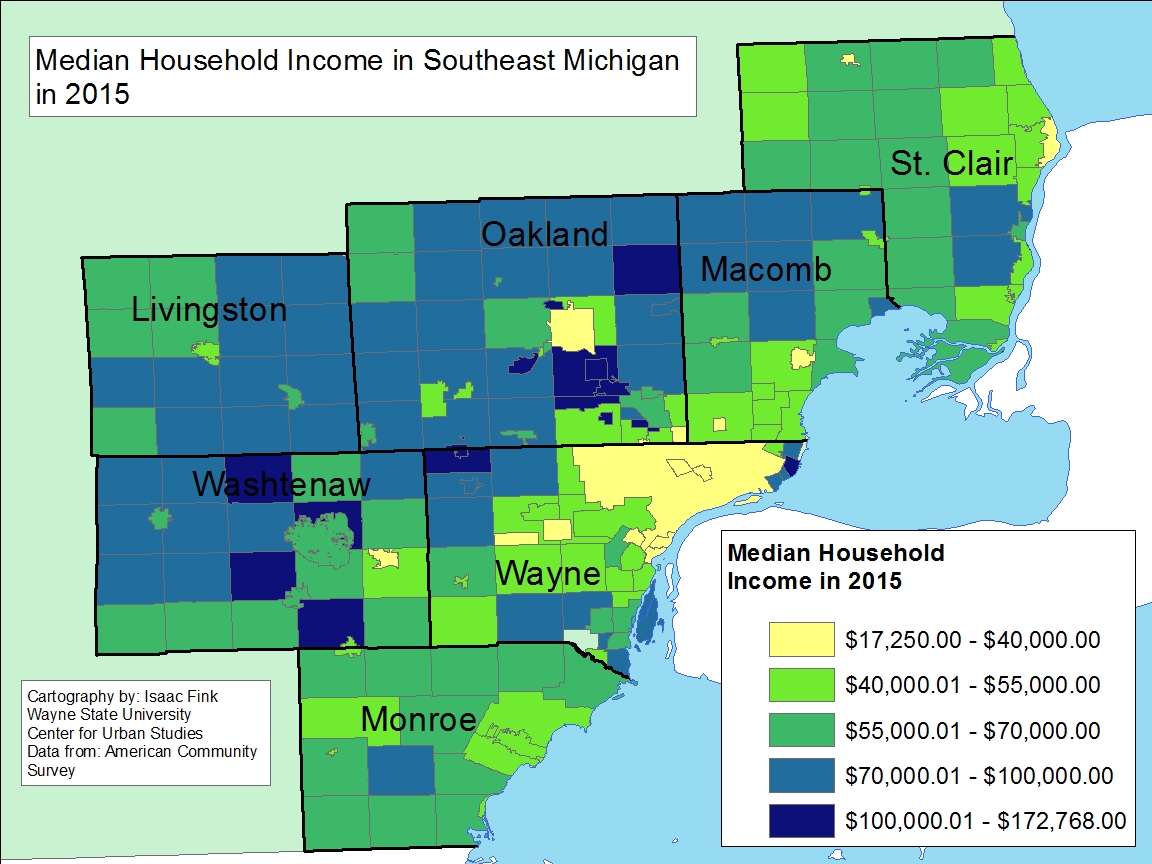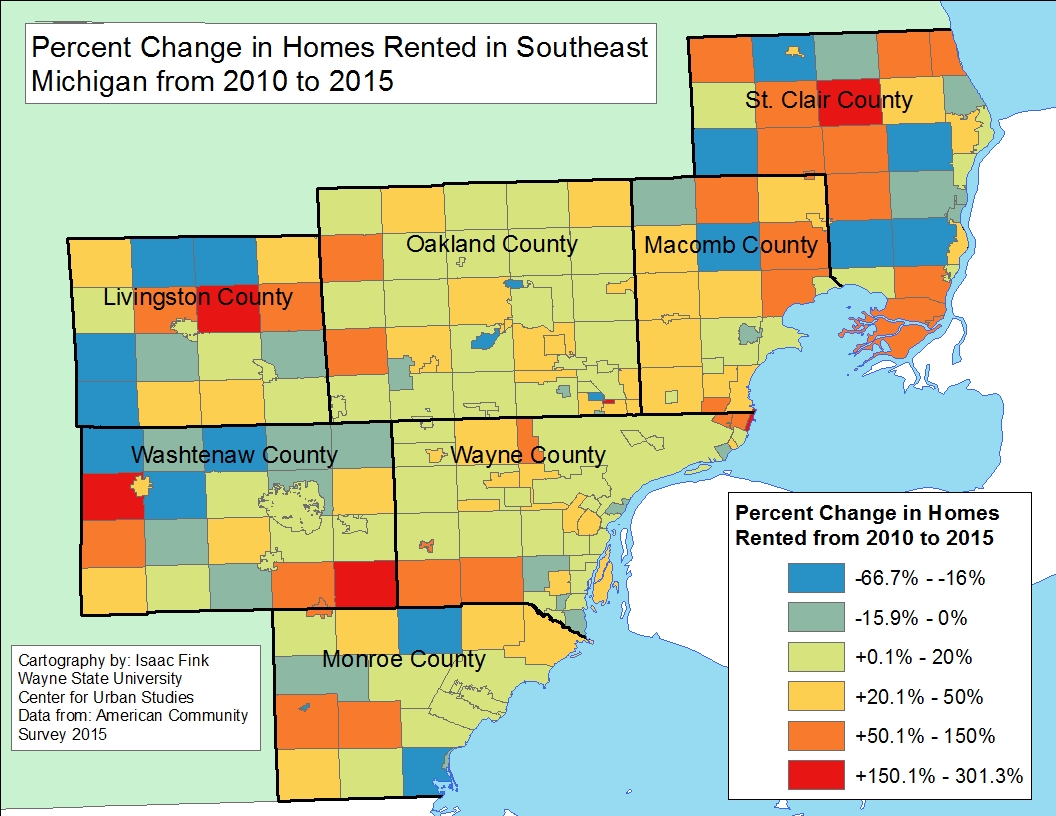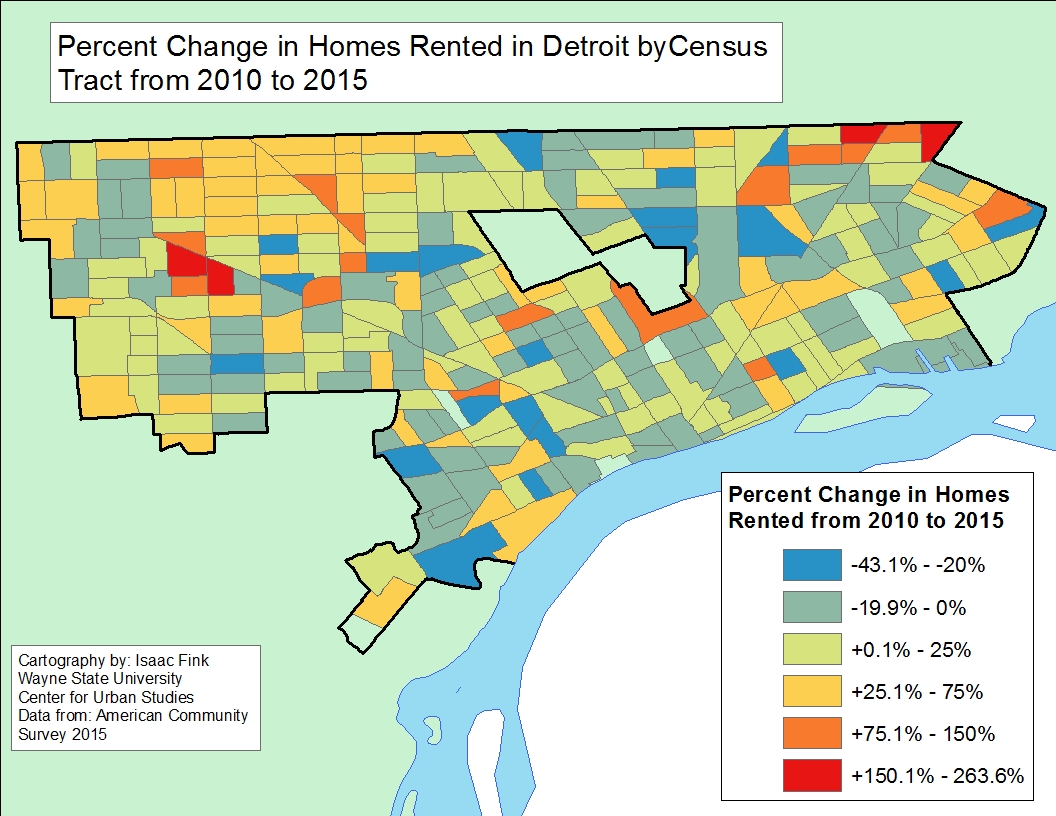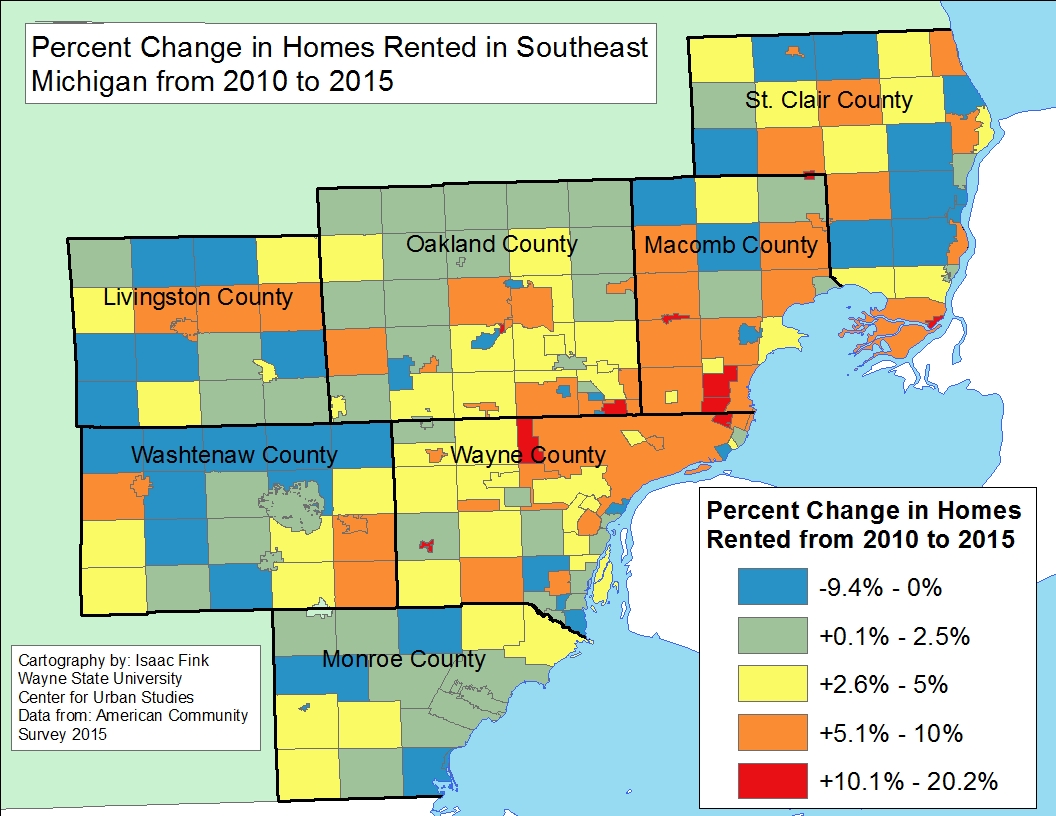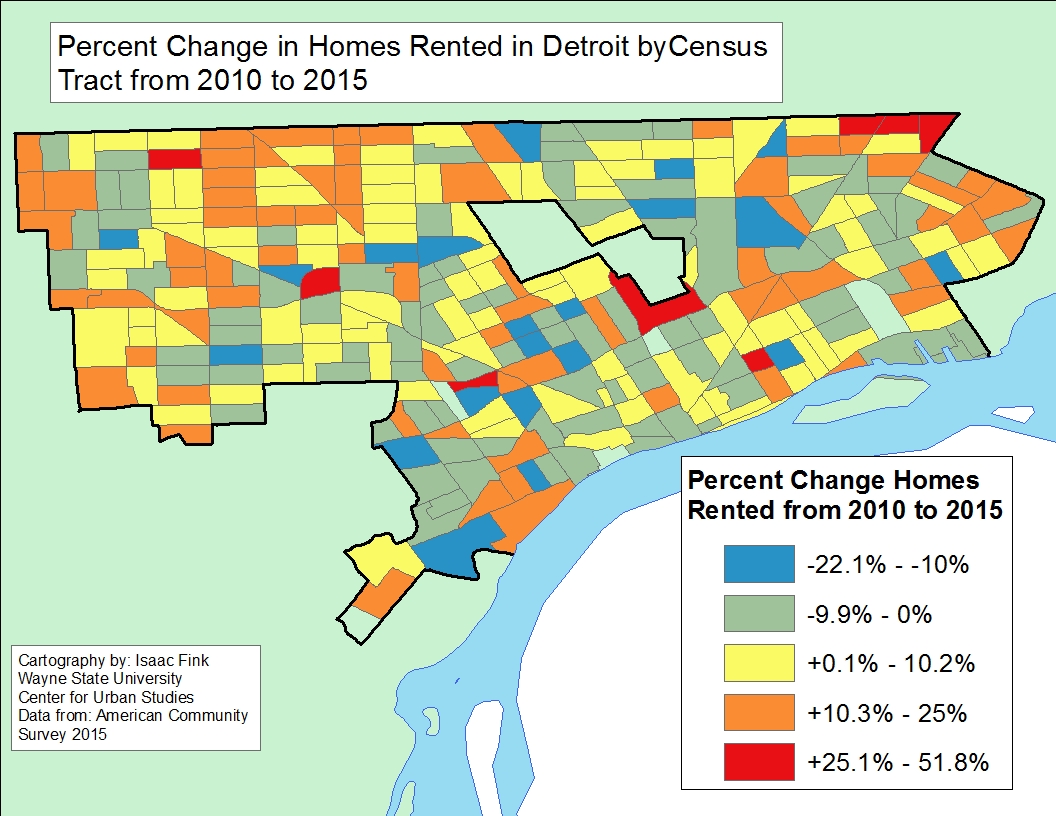In Southeastern Michigan there is a greater percentage of children under the age of 18 living in poverty in several communities than there is adults living in the same circumstances. Not only is this the case in the region, but also, the percentage of children living in poverty has increased at a more rapid rate since 2000 than it has for those between the ages of 18-64 and for those above the age of 65. This is sad state of affairs.
All data presented here is provided by the U.S. Census Bureau and according to the U.S. Department of Health and Human Services, the poverty threshold for an individual in 2015 was an annual earning of $11,770 and for a family of four it was $24,250. In 2010 the poverty threshold for an individual was $10,830 and for a family of four it was $22,050. In 2000 the poverty threshold for an individual was $8,350 for a family of four was $17,050.
In the year 2000 the following five municipalities had the highest percentage of children under the age of 18 living in poverty:
- Highland Park: 45 percent
- Hamtramck: 36.4 percent
- Ecorse: 34.9 percent
- Detroit: 33.9 percent
- River Rouge: 30.9 percent
In 2010 the municipalities with the highest percentage of children population living in poverty shifted to the following:
- Highland Park: 58.5 percent
- Hamtramck: 58.5 percent
- Ecorse: 51.9 percent
- Detroit: 46.9 percent
- Memphis: 46 percent
By 2015 the percentage of children living in poverty had increased still further throughout the region, as can particularly be seen by the top five communities with the highest percentage of children living in poverty. These communities were:
- Highland Park: 63.8 percent
- Hamtramck: 62. Percent
- Detroit: 57.1 percent
- Inkster: 56.7 percent
- River Rouge: 54.4 percent
Percent in Poverty Level Changes 2000-2010
Between 2000 and 2010 the LaSalle Township experienced the highest percentage increase of children residing in poverty at 28.4 percent. LaSalle, being a more rural suburban community in Southeastern Michigan, was not the only community with such characteristics to find itself atop the list with the highest percentage increases. Of the 46 communities that experienced more than a 10 percent increases in the percentage of children living in poverty between 2000 and 2010, 11 were inner-ring suburbs. Detroit experienced a 13 percent increase in the percentage of children living in poverty between 2000 and 2010; Highland Park experienced a 12.8 percent increase and Hamtramck experienced a 22 percent increase. Overall, there were only 39 communities that experienced either no increase in the percentage of children residing in poverty or a decline in the percentage.
When comparing the increase in the percentage of children living in poverty between 2000 and 2010 we see that for both adults between the ages of 18-64 and those over the age of 65, neither group experienced an increase above 17 percent. For children under the age of 18, there were 12 communities where the increase in the percentage of children living in poverty was above 17 percent.
Percent in Poverty Level Changes 2010-2015
Between 2010 and 2015 there were 32 communities in Southeastern Michigan where there was more than a 10 percent increase in percentage of children living in poverty. Of these communities, the top five were nearly all more rural, suburban communities. These communities were:
- Richmond (city): 35.2 percent
- Belleville: 24 percent
- St. Clair: 23.3 percent
- Melvindale: 23.2 percent
- Sumpter Township: 21.7 percent
Percent in Poverty Level Changes 2000-2015
Between 2000 and 2015 there were 64 communities in Southeastern Michigan that experienced over a 10 percent increase in the percentage of children living in poverty since 2000 and 173 communities that experienced an increase above 0.01 percent. The top five communities with the largest increases were:
- Richmond (city): 31.6 percent
- Inkster: 28.6 percent
- Royal Oak Township: 28 percent
- Sumpter Township: 27.6 percent
- Eastpointe: 26 percent
During this time span we do see that there is a greater number of inner-ring suburbs that experienced increases above 10 percent than there were during the 2000 to 2010 time frame. However, as the map shows above, the suburbs were not protected from the, in some cases drastic, increases in the percentage of children living in poverty. And, just as the increases were drastic for several communities throughout Southeastern Michigan, they were also far greater than the percentage increases of adults between the ages of 18-64 and those above 65 living poverty during the same time period. For those between the ages of 18-64 the highest percentage increase of those living in poverty was River Rouge at 21 percent. For those above the age of 65 the City of Hamtramck experienced the largest increase at 13.5 percent.
Overall, the data presented in this post conveys two strong messages: Southeastern Michigan has a greater percentage of children living in poverty than adults and the elderly, and the percentage of children living in poverty has been increasing at a faster rate than the adults living in the region. Additionally, the data presented in this post again shows the theme that poverty levels aren’t only increasing in the region’s urban areas, but also in the suburbs and more rural areas.
